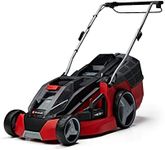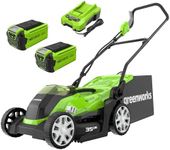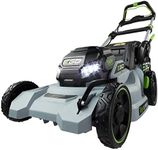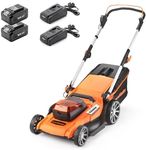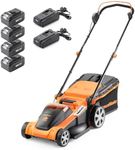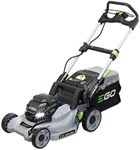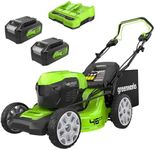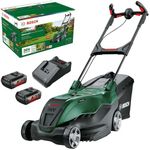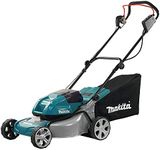Buying Guide for the Best Battery Lawn Mowers
Choosing the right battery lawn mower involves understanding your lawn's specific needs and matching them with the mower's features. Battery lawn mowers are a great choice for those who want a quieter, more environmentally friendly option compared to gas mowers. They are also easier to maintain, as they don't require oil changes or spark plug replacements. When selecting a battery lawn mower, consider the size of your lawn, the type of grass, and any obstacles or slopes you may have. This will help you determine the necessary power, battery life, and additional features you might need.Battery VoltageBattery voltage is a measure of the power output of the lawn mower. Higher voltage typically means more power, which can be beneficial for cutting through thicker or taller grass. Battery voltages for lawn mowers usually range from 20V to 80V. For small to medium-sized lawns with regular grass, a lower voltage (20V-40V) may suffice. For larger lawns or tougher grass, consider a higher voltage (60V-80V) to ensure efficient cutting. Choose a voltage that matches the demands of your lawn to avoid overworking the mower or underperforming.
Battery Capacity (Ah)Battery capacity, measured in ampere-hours (Ah), indicates how long the battery can run before needing a recharge. A higher Ah rating means longer run time. Battery capacities typically range from 2.0Ah to 7.5Ah. For smaller lawns, a lower capacity (2.0Ah-4.0Ah) might be sufficient, while larger lawns may require a higher capacity (5.0Ah-7.5Ah) to complete the job without recharging. Consider the size of your lawn and how long it usually takes to mow when choosing the battery capacity.
Cutting WidthThe cutting width of a lawn mower refers to the width of the strip of grass it can cut in a single pass. Wider cutting widths mean fewer passes to mow the lawn, which can save time. Cutting widths for battery lawn mowers typically range from 14 inches to 21 inches. For smaller lawns, a narrower cutting width (14-16 inches) may be more maneuverable and sufficient. For larger lawns, a wider cutting width (18-21 inches) can reduce mowing time. Consider the size of your lawn and any tight spaces or obstacles when selecting the cutting width.
Run TimeRun time is the duration a lawn mower can operate on a single battery charge. It is influenced by both the battery capacity and the power demands of the mower. Run times can vary from 30 minutes to over an hour. For small lawns, a shorter run time may be adequate, while larger lawns will benefit from a longer run time to avoid interruptions. Assess how long it typically takes to mow your lawn and choose a mower with a run time that matches or exceeds this duration.
Charging TimeCharging time is the amount of time it takes to fully recharge the lawn mower's battery. Faster charging times can be convenient if you need to mow frequently or have a large area to cover. Charging times can range from 30 minutes to several hours. If you have a small lawn or mow infrequently, a longer charging time may not be an issue. However, for larger lawns or frequent mowing, a shorter charging time can be beneficial to ensure the mower is ready when you need it.
WeightThe weight of a battery lawn mower affects its maneuverability and ease of use. Lighter mowers are easier to push and handle, especially on uneven terrain or around obstacles. Battery lawn mowers can weigh anywhere from 30 to 90 pounds. For smaller lawns or users who may have difficulty with heavier equipment, a lighter mower (30-50 pounds) is preferable. For larger lawns, the weight may be less of a concern, but consider your physical ability and the terrain of your lawn when choosing the weight of the mower.

